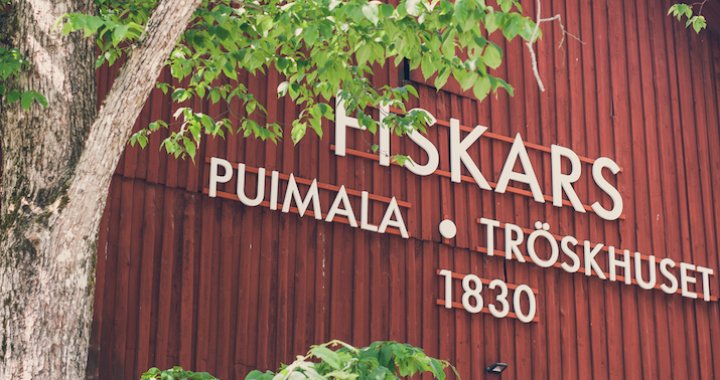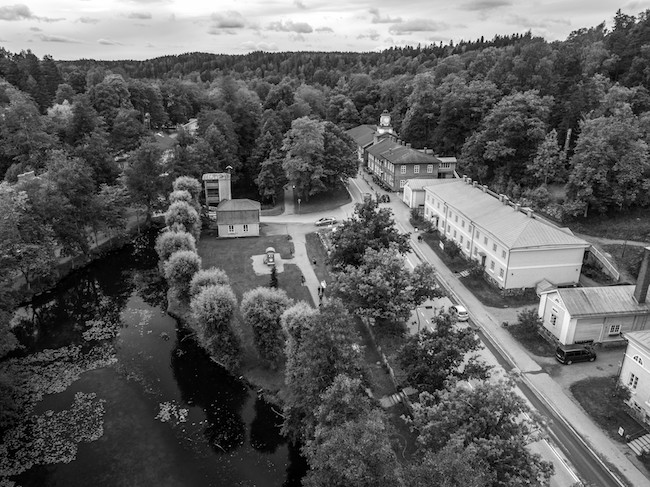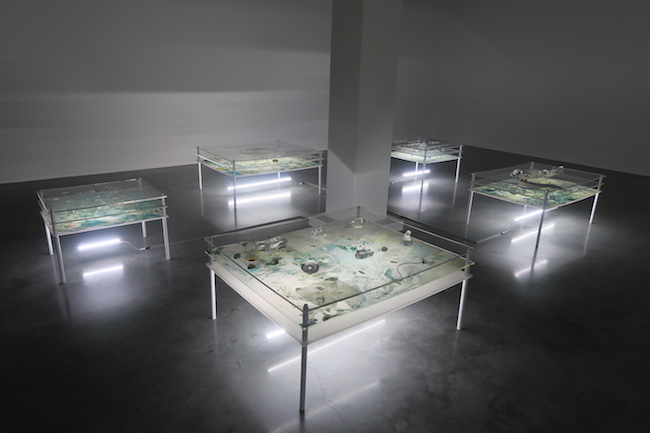
Small is beautiful
An express-interview with Fiskars Village Art & Design Biennale founder Kari Korkman
30/04/2019
Fiskars village in Southwest Finland has a long history of producing and stimulating art processes – the village was founded on the Fiskars River in 1649 and since then has been considered the birthplace of Finnish industrialism. Time has passed, but Fiskars village has been able to maintain its significance in the field of traditional art and design and is still an important centre for handcrafts in Finland.
However, the year 2019 is marking a turning point for Fiskars village as it is also becoming a centre for contemporary art and design. From 19 May until 15 September, the first Fiskars Village Art & Design Biennale will take place in this small town of only 600 inhabitants. The main focus of the new Biennale is to combine different artistic contemporary practices, as well as to engage artists, designers, local communities and various audiences.
The founder of the Fiskars Village Art & Design Biennale is Kari Korkman, who is also the founder and director of Helsinki Design Week and, since 2016, the President of World Design Weeks. Since the 1990s, he has been involved in organizing various design projects and exhibitions and has amassed great experience in curating. Arterritory.com invited Korkman to an express-interview regarding the new Fiskars Village Biennale, which definitely has the potential to become a momentous event in the Nordic region.
Alma Heikkilä, Microbiota, 2016, Tensta Konsthall. Photo credits: Gintaras Janavicius
Although the village itself has a long tradition of hosting exhibitions, this is the first time that the Fiskars Village Art & Design Biennale will take place. How and why did you decide to organize the Biennale precisely this year?
The more profound answer lies in the history, present, and future of the village itself. The village is said to be the birthplace of Finnish industrialism (1649), which provides a unique and inspiring narrative for the present situation. It has 600 inhabitants, from which 100 work as an artist or designer. It is a place that is literally alive with creative industrialism…
The picturesque Fiskars village appears as something unreal to people that live in massive, densely populated cities in Asia, Europe and the Americas. I believe there is a momentum for our Biennale because we are so different from everyone else in the world. Most people appraise biennales by their the size. So do we, but from an opposite perspective: we say that small is beautiful – and more sustainable. We emphasize the quality – not the quantity – of art and design. And life as a whole. It is our duty to make sure that the increase in cultural tourism does not mess up the lives of the locals.
Tuomas A. Laitinen, Dossier of Osmosis, 2018. Installation view, 21st Biennale of Sydney (2018), Museum of Contemporary Art Australia. Photo credits: silversalt photography
You’ve said that there is no proper reason to draw a line between art and design. How would you explain this opinion?
It represents my opinion as an explorer. I understand that there are certain fundamental differences between the professions of designer and artist, but both of them can gain a great deal from one another. As an explorer of both fields, I enjoy the possibility of observing design as well as crafts and art in the same place – without any restrictive definitions.
The Fiskars Village Art & Design Biennale will open to the public on 19 May 2019. What kind of an exhibition programme can visitors expect?
Generally speaking, the programme includes three main exhibitions by our distinguished curators Anniina Koivu, Jasper Morrison and Jenni Nurmenniemi. Some of the names of the artists and designers have already been revealed. We are extremely proud of the line-up of participants. We are very grateful for each and every artist and designer who believed in us and wanted to join the first edition. Besides the main exhibitions, there’s a parallel programme that will provide more than 30 events taking place both in and outside of the village.

Fiskars Village
Will the Biennale be divided into different “sections” dedicated to either design or art?
Yes, two indoor venues will be showing contemporary art. One will be dedicated to crafts. In-between these venues, visitors may look for and test-out outdoor benches curated by Jasper Morrison and created by 20 top designers from around the world.

Designer Karin Widnäs
The title of the contemporary art exhibition is “Being(s)-with”. What is the concept behind the exhibition, and what does “being with” mean to you?
So as to properly answer your question, I will refer to the exhibition’s curator, Ms. Jenni Nurmenniemi: “The contemporary art section of the first Fiskars Village Biennale delves into the wonder and trouble of togetherness. From symbiotic to other kinds of interdependencies, questions of coexistence emerge to the forefront.
In the exhibition Being(s)-with, the focus of a question – how to become better at living together and dealing with differences – shifts from a human-centric perspective to one that considers the ways in which humans, their planet-mates, and different technologies are entangled in the process of co-creating this current version of life on earth[i].
[..] The tricky art of living together is the key to the exhibition, and the artworks chosen or commissioned for the exhibition (from twenty artists) utilize a wide range of artistic methods and languages to explore the ways in which human lives evolved with and continue to be shaped by extra-human forces. They also tackle human attempts to make sense of, and master, each other and the rest of the planet’s dwellers. The artists’ approaches vary wildly, from abstraction to immersion to participatory situations.
[..] Despite the overall forward-thinking mentality, an important undercurrent in the exhibition is the re-reading of history, namely, of the troubled sides of coexistence. Some artworks examine how subjugation of countless beings has been central to how the current political and economic world order has come to be – and how the mechanisms of othering manifest at present.
[..] The exhibition invites visitors to slow down, to focus their attention, and to attune to the signals, materials, and processes that shape the fabric of the everyday but easily go unnoticed amidst its hum and rumble. Instead of offering mere visual spectacle, Being(s) withstrives to feed diverse senses and imagination. The invited artists have cultivated practices that escape the accustomed logic of representation and instead try to make palpable the invisible threads that connect our lives to the cosmos.”

[i] In many ways, the exhibition concept is inspired by the thought of theoretical physicist and feminist theorist Karen Barad. See for, instance, K. 2007. Meeting the Universe Halfway. Quantum Physics and the Entanglement of Matter and Meaning. Durham & London, Duke University Press.

